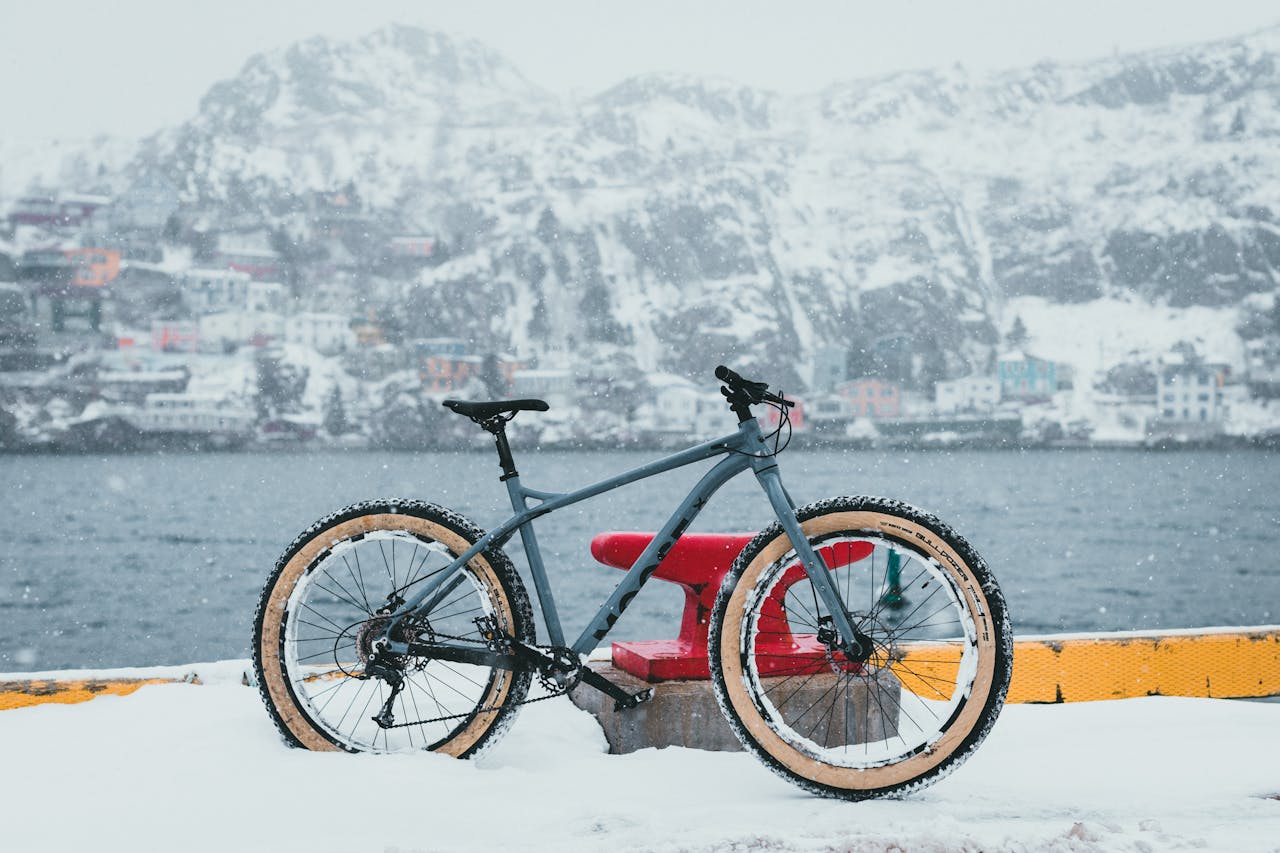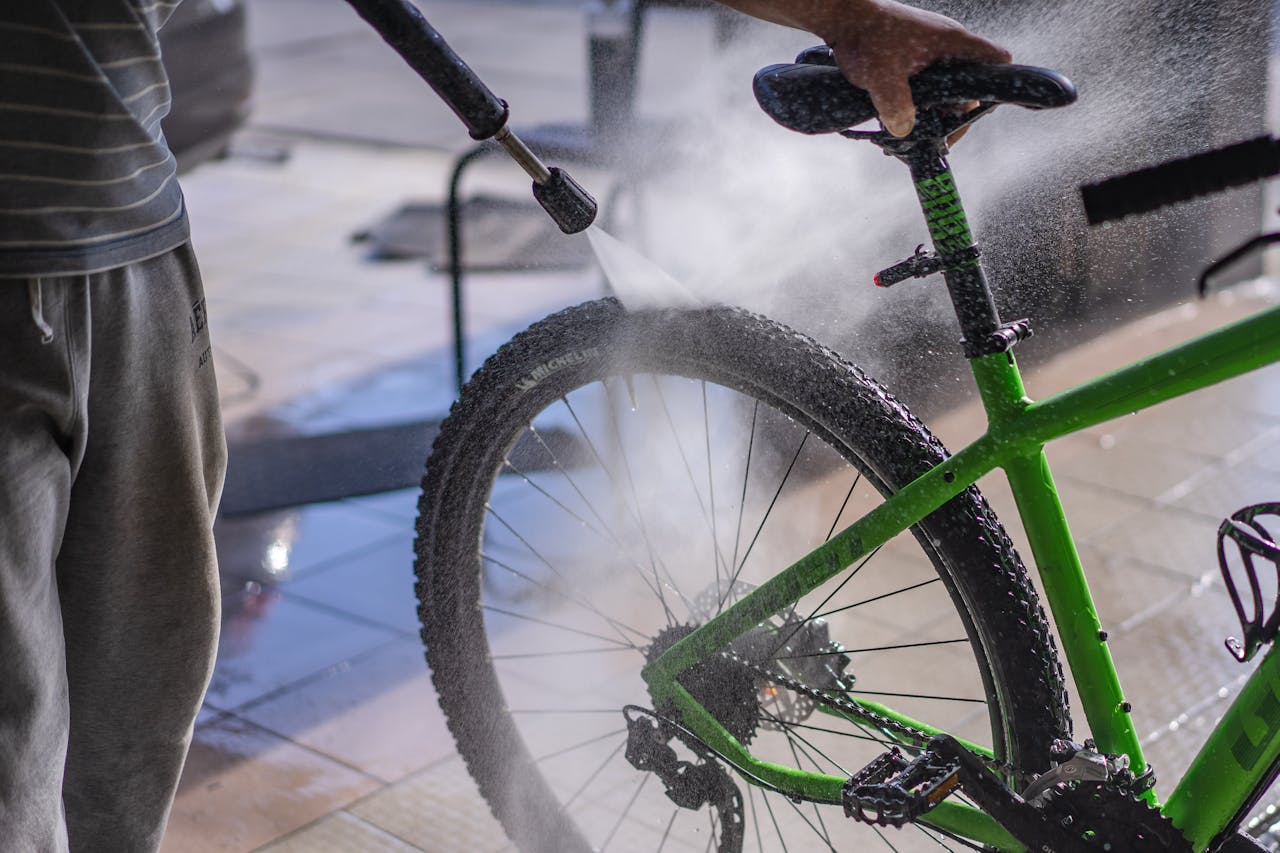As temperatures drop and daylight hours shrink, winter cycling in the UK can be challenging. Rain, frost, and occasional snow make roads slippery, increasing the risk of accidents. Cold weather also affects both the rider and the bike’s mechanical components. Preparing your bike properly ensures it performs reliably and keeps you safe during your commute or weekend rides. Winter riding also exposes your bike to salt, grime, and moisture, which can lead to accelerated corrosion if left unaddressed. A proactive approach to maintenance and equipment upgrades can prevent costly repairs and make your cycling experience smoother.
Conduct a Thorough Bike Inspection Before Winter
Start with a full inspection of your bike to identify existing issues and prevent them from worsening. Examine the frame for cracks, rust spots, or signs of metal fatigue. Inspect the wheels for bent rims or loose spokes, as even minor misalignment can compromise handling on slippery roads. Test your brakes and ensure levers feel responsive; replace worn pads immediately. Check the chain for stretching or stiff links, and inspect derailleurs and cables for corrosion or fraying. Tighten bolts and screws, paying particular attention to the seat post, handlebars, and stem. Early identification of mechanical issues reduces the likelihood of failures in cold and wet conditions.
Choose the Right Tyres for Winter Conditions
Tyres are crucial for maintaining traction on wet, icy, or muddy roads. Consider using wider tyres with deeper tread patterns specifically designed for winter or urban conditions. Puncture-resistant tyres are particularly valuable in the UK, where debris such as glass, grit, and metal shards is common in winter. Some cyclists prefer studded tyres in areas prone to frost and ice, providing additional grip for short stretches of slippery roads. Maintain proper tyre pressure, slightly lower than summer levels, to increase contact with the road and improve stability. Regularly inspect tyres for embedded debris and replace them if tread is worn below recommended levels.

Upgrade Your Brakes for Maximum Safety
Braking performance is vital for winter riding. Wet and muddy conditions significantly reduce stopping power, so upgrading brake pads or discs is recommended. For rim brakes, choose winter-specific pads that resist water and maintain friction on wet rims. Disc brakes require regular rotor cleaning to remove grime and prevent squealing. Apply a thin layer of lubricant to pivot points, but avoid contact with braking surfaces. Check brake cables for fraying or corrosion, and replace as necessary. Properly maintained brakes provide confidence on slippery roads, steep descents, and sudden stops in urban traffic.
Protect Your Drivetrain from Winter Wear
The drivetrain is one of the most vulnerable parts of your bike in winter. Water, mud, and road salt accelerate wear and reduce performance. Start by thoroughly cleaning the chain, cassette, and derailleurs with a degreaser, removing all grime. Apply a winter-specific lubricant that repels water and prevents rust, focusing on chain links, derailleur pivots, and cables. Inspect gear cables for signs of corrosion or fraying and replace if necessary. Regular lubrication not only improves shifting smoothness but also extends the lifespan of expensive drivetrain components. Consider carrying a small chain cleaning kit on longer rides for emergencies.
Ensure Visibility with Lights and Reflectors
UK winters bring long periods of darkness, fog, and low visibility, making lights and reflectors essential. Equip your bike with bright front lights of at least 400 lumens and red rear lights with flashing modes to attract attention. Reflective strips on tyres, pedals, and frame components further enhance visibility. For daily commuters, consider dynamo-powered lights that do not rely on batteries, or high-capacity rechargeable lights for extended evening rides. Pair your lights with reflective clothing or jackets for maximum safety. Remember to check batteries regularly, as cold temperatures can reduce performance.
Install Mudguards to Keep Yourself and Your Bike Clean
Mudguards, or fenders, are essential for UK winter conditions. They protect both the rider and the bike from water, mud, and salt spray. Full-length mudguards prevent grime from reaching the drivetrain, reducing wear and the frequency of cleaning. Clip-on or frame-compatible mudguards are available for most commuter and hybrid bikes. When choosing mudguards, ensure they are compatible with your tyre width and frame geometry. Installing mudguards also keeps your clothing dry, allowing you to commute comfortably without needing to change immediately upon arrival.
Regular Cleaning and Maintenance Prevent Damage
Winter exposes your bike to corrosive elements that can damage components over time. Clean your bike regularly using warm water and bike-specific cleaners, avoiding high-pressure hoses that can force water into bearings. After cleaning, dry the bike thoroughly and apply protective sprays to exposed metal surfaces, including the frame, bolts, and chain. Wipe down brake and gear components to remove grime. Weekly maintenance checks are recommended during winter to catch potential issues early. Keeping the bike clean and lubricated improves performance and prolongs its lifespan.

Adjust Your Bike Setup for Winter Comfort
Small adjustments to your bike can significantly improve handling and comfort in winter. Lowering the saddle slightly can improve stability on slippery roads, while adjusting handlebars enhances control in wet and windy conditions. Wider tyres increase traction, and responsive brake and gear cables boost confidence during technical manoeuvres. For long-distance rides, consider adding ergonomic grips or padded handlebar tape to reduce hand fatigue caused by cold weather. Proper bike setup ensures safer, more comfortable winter cycling.
Prepare Yourself with Appropriate Clothing
Rider clothing is as important as bike preparation. Waterproof jackets, thermal layers, and insulated gloves protect against cold and wet conditions, while high-visibility vests or reflective accessories improve safety during low-light rides. Consider thermal cycling bibs, shoe covers, and moisture-wicking base layers to stay warm without restricting movement. Proper clothing prevents discomfort that could affect focus and reaction times, making winter riding safer and more enjoyable.
Plan Your Winter Routes Carefully
Winter conditions require thoughtful route planning. Avoid roads prone to ice, flooding, or heavy debris. Prioritize main roads or designated cycling paths that are regularly cleared and treated. Allow extra travel time, as wet and slippery surfaces reduce average speed. Plan alternative routes in case of closures or unsafe conditions. Maintaining a cautious riding style, increasing following distance, and reducing speed around corners and junctions ensures safer winter rides.
Stay Vigilant with Weekly Checks
Consistent inspections throughout the winter season are critical. Check tyre pressure, brakes, chain condition, and lighting before each ride. Clean and lubricate components as needed, and monitor wear on brake pads, tyres, and cables. Carry a compact maintenance kit including a pump, spare inner tubes, and multi-tool for on-road emergencies. Regular vigilance reduces the risk of mechanical failures and ensures a safer cycling experience in challenging winter conditions.
Enjoy Winter Riding Safely and Efficiently
Winter cycling in the UK can be rewarding when approached correctly. With proper preparation, maintenance, and rider awareness, cyclists can enjoy commuting, leisure rides, and training year-round. From tyres, brakes, and drivetrain maintenance to visibility enhancements, mudguards, and winter-specific clothing, each element contributes to safety and comfort. By following these guidelines, riders can embrace winter cycling with confidence and continue to enjoy the health, convenience, and environmental benefits of riding throughout the season.
